If you’re looking for some color and fragrance this spring and summer, gardens in national parks are — or soon will be — abloom.
Many of our national park sites, particularly those preserving places of historical and cultural significance, include green and flowery spaces. The origins of some national park gardens can be a story in themselves!
Here are eight gardens in diverse regions of the National Park System that you may not know about — all with intriguing histories and features. Each has been known to bring joy to people and pollinators alike.
1. Augusta Kohrs Victorian Garden — Montana
As a young bride in the late 1860s, Augusta Kohrs sought to bring Victorian refinement to the rugged Montana cattle ranch now known as Grant-Kohrs Ranch National Historic Site where her husband ran a cattle empire.
While common in the Eastern and Midwestern U.S. at the time, Victorian gardens were rare in the West. Her garden — with its large flower beds, lilac hedge, cobble rock walls, stone terraces and sand walkways — provided a sense of order and elegance around the main ranch house.
Kohrs cultivated the space well into her 80s, thanks to her grandson’s 1934 modifications that improved the garden’s accessibility. Over time, her garden and its geometric shapes became a blend of brightly colored and strong-smelling annuals, perennials, bulbs and roses mixed with hardy native plants.
Park staff recently restored and rehabilitated the garden, allowing Kohrs’ legacy and favorite plants to endure. Visitors can enjoy the blooms beginning in late June.
2. Kenilworth Aquatic Gardens — Washington, D.C.
Kenilworth Aquatic Gardens is the only national park site devoted to cultivated water-loving plants. Located along the Anacostia River, Kenilworth is best known for its annual bloom of exotic lotus and water lilies — a colorful spectacle that begins in early May and runs through mid-September. A stunning sea of pink lotus flowers peaks in late June, although each season offers its own variety of beauty.
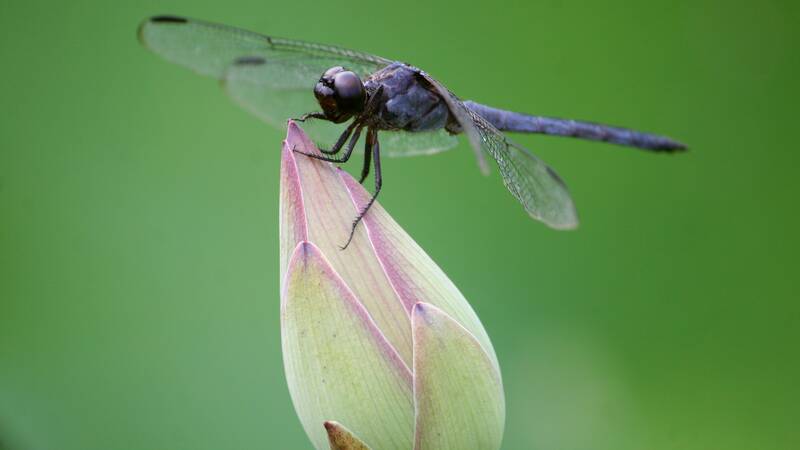
A dragonfly on a lotus bud at Kenilworth Aquatic Gardens.
© Marionsalaun | Dreamstime.comKenilworth’s marshes provided food and medicinal plants for the Nacotchtank people for thousands of years, but the area was considered unusable farmland when Civil War veteran Walter Shaw purchased it in 1880. With water lilies as a hobby, he and daughter, Helen, created a world-renowned water garden and profitable plant business.
In addition to enjoying the water gardens, many people come to Kenilworth to birdwatch. More than 250 species have been spotted in this aquatic, marsh and wooded habitat.
Short walking trails and boardwalks allow visitors to see the ponds and their plants and wildlife up close. A quarter-mile dirt path connects Kenilworth to the River Trail along the Anacostia and onward to the Park System’s Anacostia Park.
3. Chatham Manor — Virginia
Chatham Manor, built in 1771, is part of Fredericksburg and Spotsylvania National Military Park. The mansion and its gardens help interpret the property’s history — from slave plantation to Civil War devastation and post-war rebirth.
What visitors see today resembles Chatham’s appearance after a 1920s restoration by its fourth set of owners. They commissioned landscape architect Ellen Biddle Shipman to design an extensive walled garden to cover an area used as a U.S. Army camp and hospital in 1862.
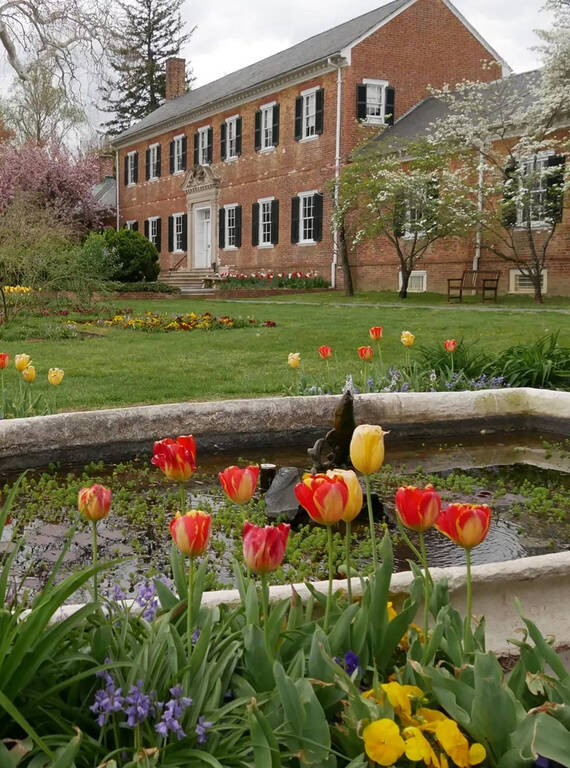
Chatham Manor and its gardens with fountain and springtime blooms.
NPSShipman was one of three major female landscape architects of the early 20th century, known for including pathways, statuary and water features in her designs. The Chatham gardens included perennial beds, wildflowers, miniature fruit trees, wisteria and evergreen shrubs.
The National Park Service acquired Chatham in the 1960s and opened it to the public in 1977. The Shipman gardens had languished, but after research in the early 2000s, they were restored to much of their original design by the Garden Club of Virginia, Friends of Chatham, Rappahannock Valley Garden Club and the Rappahannock-Fredericksburg Rotary Club. A 2019 restoration of the estate’s century-old greenhouses allows the Park Service and volunteers to start seeds for the gardens on site.
4. Pullman Transfer Pit — Illinois
In the 1880s, the Pullman Palace Car Company created America’s first planned model industrial community — and the grounds of its train-car factory reflected innovative urban planning.
President Barack Obama designated Pullman National Monument, now Pullman National Historical Park, in 2015. When architects breathed life into the abandoned grounds, they used historical photographs to replicate much of Pullman’s 1880s look and feel. This included its transfer pit, where a passenger car’s chassis was rolled out one bay door from a particular stage of manufacturing and moved down the pit’s tracks to another bay for the next manufacturing stage.

Workers exit the Main Gate at Pullman Palace Car Company in 1883.
The Newberry LibraryIn the NPCA-led vision for Pullman, architects recreated the transfer pit’s functionality and turned it into a garden that is central to the park’s historical interpretation.
Today, the transfer pit displays a variety of dry prairie flowers and shrubs amid new rails and permeable pavers. Along the 750-foot-long walkway, interpretive signs educate visitors about the factory operations. The plantings — typical of Illinois’ landscape before urban sprawl — collect stormwater run-off and provide year-round color.
5. Sunken Garden — Connecticut
A defining feature at Weir Farm National Historical Park, this garden was commissioned in the 1930s by the youngest daughter of impressionist painter J. Alden Weir. Cora Weir Burlingham had Vera Breed design the garden in the popular Colonial Revival style with stone retaining walls on its four sides, curving flowerbeds backed by ornamental evergreens, and dwarf boxwood.
It is one of three gardens on the property. Visitors can also explore the Secret Garden and Terraced Gardens.
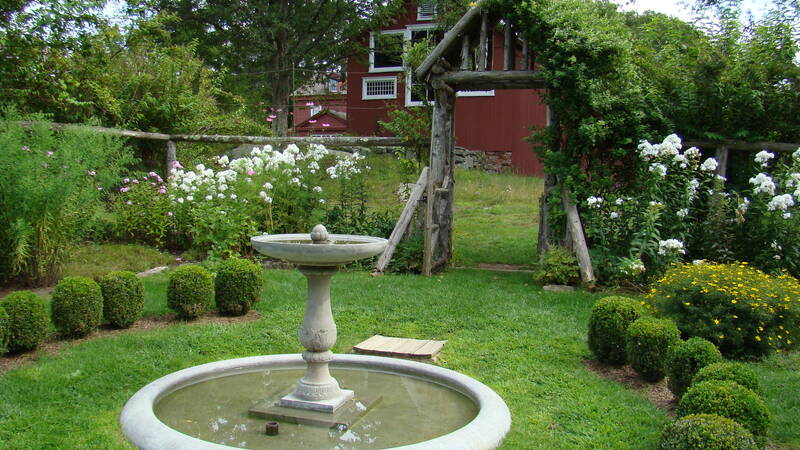
The Secret Garden is another space at Weir Farm National Historical Park.
NPSConsidered innovative and unusual for its time, the Sunken Garden was featured in James M. Fitch and F.F. Rockwell’s 1956 book, “Treasury of American Gardens.” Burlingham had the garden redesigned in 1969 by Friede R. Stege, who added more azaleas, primroses, columbine, foxglove and lupine.
The National Park Service began to inventory and rehabilitate the garden in 1995 with help from the Wilton Garden Club using historic photographs and documents. Today, it’s a favorite spot for visitors and painters alike for its diverse and colorful blooms.
6. Fort Vancouver Garden — Washington State
The Fort Vancouver Garden at Fort Vancouver National Historic Site is a smaller-scale reconstruction of an eight-acre garden that provided food, medicine, flowers and strolling space for select residents of the fort in the early 1800s. It also was an experimental nursery where seeds and plantings brought on ships from around the world were cultivated alongside native plants.
A London-based fur trading enterprise, Hudson’s Bay Company, originally operated Fort Vancouver. Its employees and local Native Americans labored in the garden, but the bounty was used by officers and their families. The fort and garden were transferred to the U.S. Army in the mid-1800s.
Today’s more condensed garden is maintained by the National Park Service and volunteers. Visitors will see a variety of flowers, vegetables and fruit trees — all based on Fort Vancouver’s historic records and archaeological excavations. The produce is used in historic cooking demonstrations in the Fort Vancouver Kitchen.
7. Alcatraz Garden — California
Alcatraz Island has no native flora. It was a barren rock encrusted with bird poop until the U.S. Army and Lighthouse Service arrived in the mid-1800s. The soil and plants seen at Alcatraz today were brought to the island by military and prison personnel who transformed portions of their home and workplace into lush gardens.
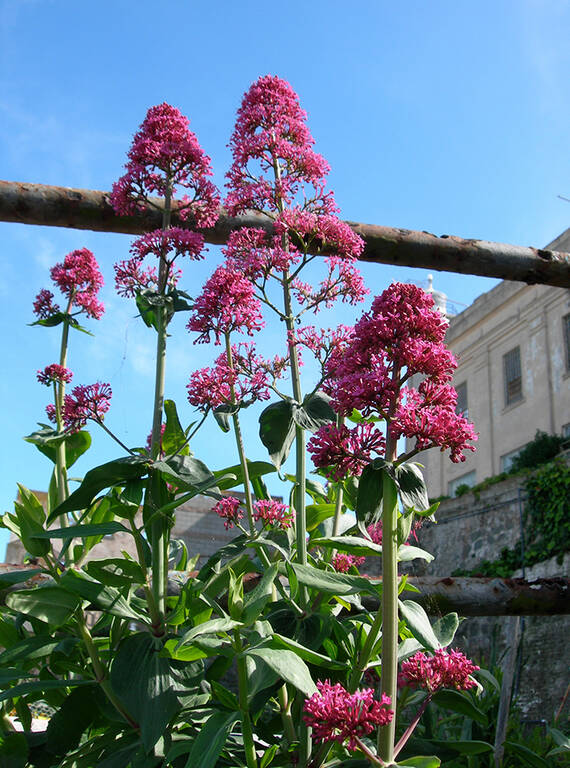
Blooming valerian at Alcatraz Island.
NPSFor more than a century, these gardens were an important part of everyday life for the Alcatraz officers, families and prisoners confined there by sentence or employment. The island’s west side slopes were carved into terraces and cultivated with blooming plants and flowers for all to enjoy.
After Alcatraz Penitentiary closed in 1963, the gardens became neglected and overgrown. They have since been restored and are maintained by a team of volunteer gardeners in partnership with the Golden Gate National Parks Conservancy. Visitors can see roses, fig trees, bulbs and colorful succulents — all similar to the plants seen in Alcatraz’s historic photographs.
8. Oakland Bottle Garden — Louisiana
Garden lovers can find something to enjoy year-round at Cane River Creole National Historical Park, home to a variety of plants inherent to Louisiana — including live oaks and the resurrection fern that grows on their limbs, and winter narcissus. Spring comes early with blooming camellias, crepe myrtles, southern magnolias and other flowers.
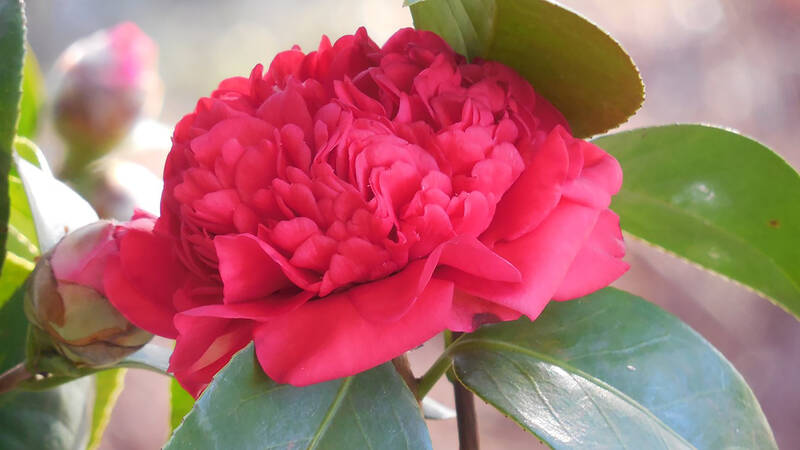
A camellia flower at Cane River Creole National Historical Park’s Oakland Plantation.
NPSOne of the park’s more distinctive features is its Oakland Bottle Garden. After a blight killed the garden’s boxwood hedges, the French Creole family that built the 19th-century manor house used bottles from its wine cellar to line the garden’s beds. The family’s descendants maintained this tradition until the National Park Service acquired the property in 1994 — at which time the Park Service began replacing bottles that were broken.
Today, visitors can spot bottles for beer, wine, mineral water and soda, as well as stoneware. The oldest bottles date to around 1790, with the newest bottles from the late 1990s.
Stay On Top of News
Our email newsletter shares the latest on parks.
About the author
-
 Linda Coutant Staff Writer
Linda Coutant Staff WriterAs staff writer on the Communications team, Linda Coutant manages the Park Advocate blog and coordinates the monthly Park Notes e-newsletter distributed to NPCA’s members and supporters.
-
General
-
- NPCA Regions:
- Mid-Atlantic
- Midwest
- Northeast
- Northern Rockies
- Northwest
- Pacific
- Sun Coast